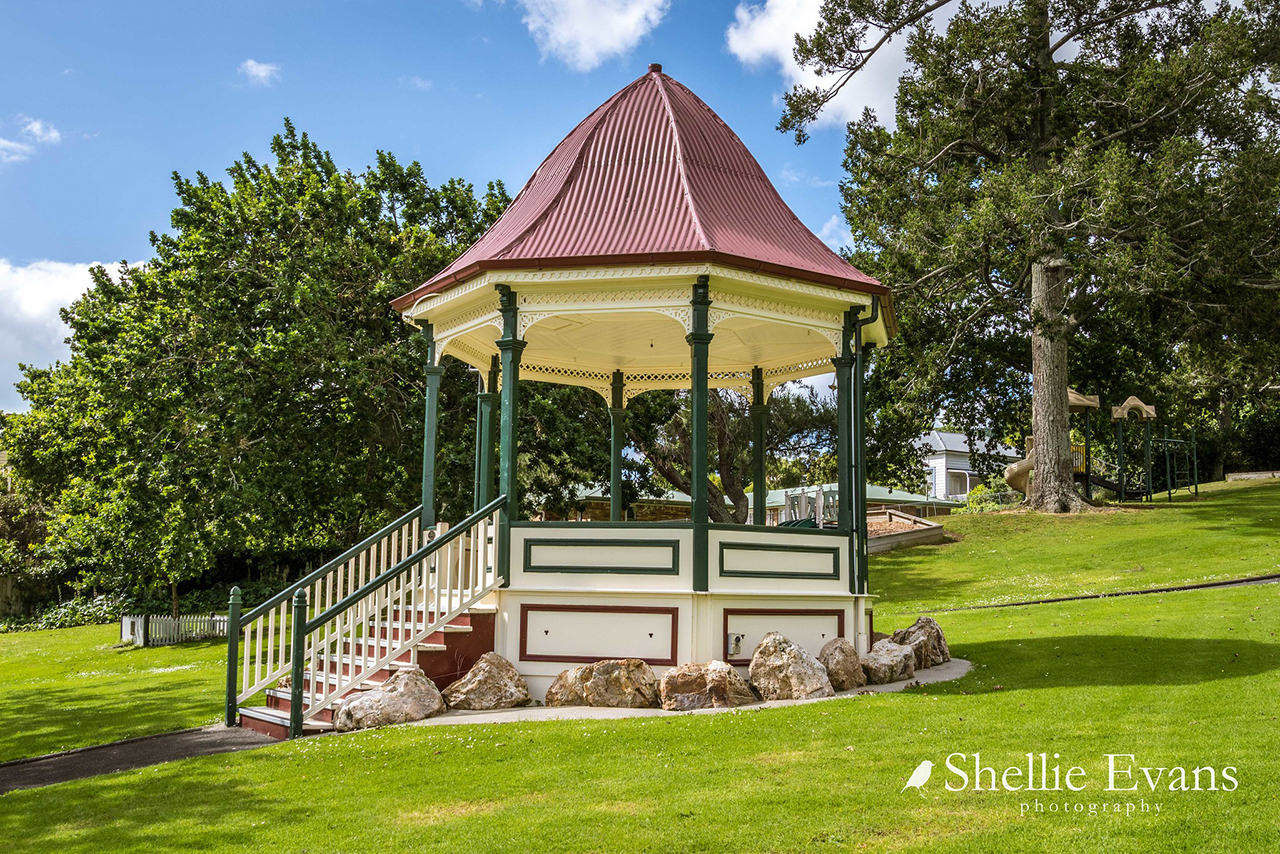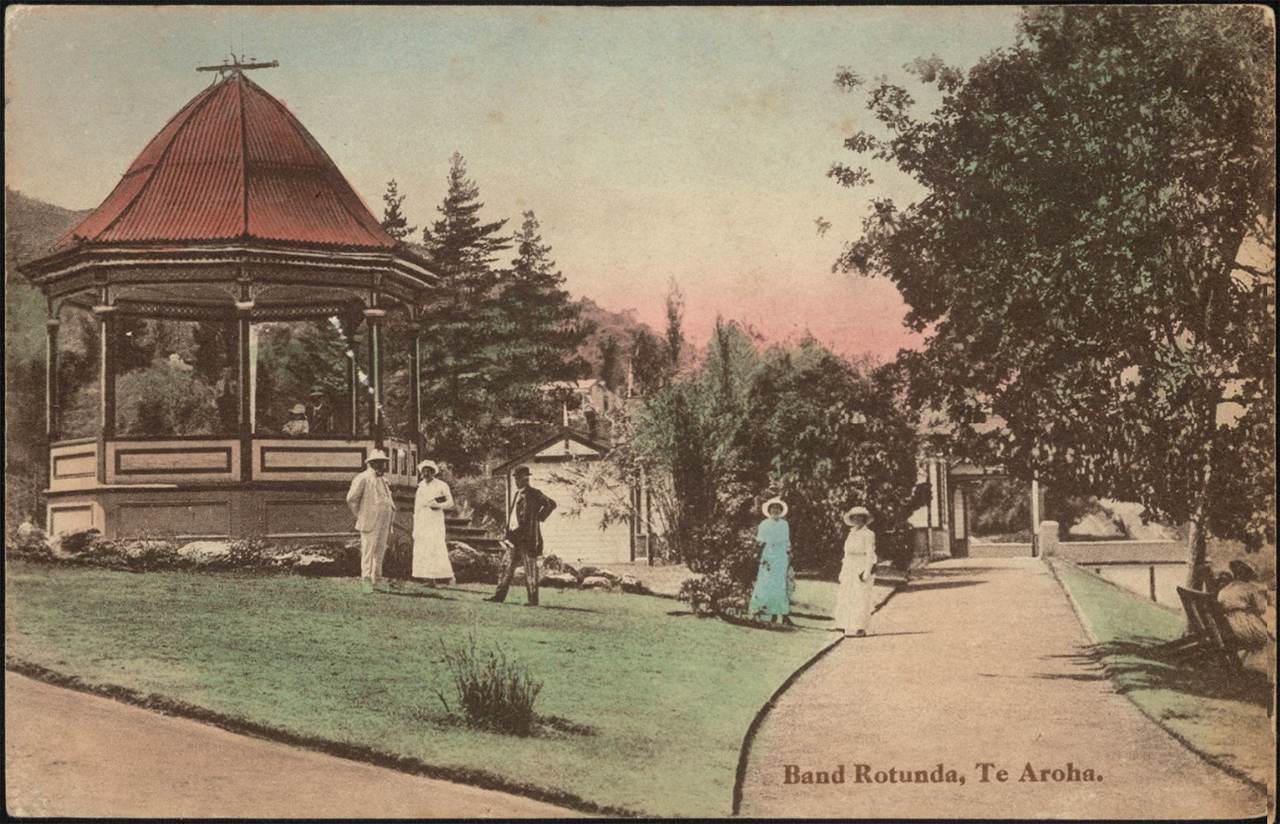During the late nineteenth and early twentieth centuries, the Hot Springs Domain at Te Aroha was the most popular geothermal resort in New Zealand. The Domain was initially established as a reserve in 1881, incorporating an area of 9.1 hectares (20 acres) on the lower slopes of Mount Te Aroha. The many hot springs in this area lay within the traditional territory of Ngati Rahiri, a hapu of Ngati Maru of Hauraki, and had long been frequented by Maori for their perceived healing qualities. By the late 1870s the site had become a popular destination for Pakeha visitors, with tourist numbers increasing after the discovery of gold on Mount Te Aroha in 1880 and the development of Te Aroha township as a mining settlement. The Domain was acquired by the government soon after the passing of the 1881 Thermal Springs District Act, with local Maori - who had played an instrumental role in initially promoting the resort - retaining the right of free access to the waters. The 1881 Act had been introduced to promote Crown ownership of New Zealand's thermal resources, partly in response to their increasing purchase and commercial exploitation by private entrepreneurs. The earliest permanent buildings in the Domain were erected soon after the reserve was brought under the Public Domains Act in 1882, and were overseen by the Te Aroha Hot Springs Board. By 1887, there were seven bath houses and a drinking fountain, with extensive grounds laid out to plans drawn up by Henry Crump, a local engineer and architect. Government money largely financed the development of the facilities, as well as the establishment of a railway from Auckland in 1886. As the centrepiece of the now-burgeoning town of Te Aroha, the spa became the first geothermal resort in the country to receive thousands of visitors on an annual basis. People came to bathe or ingest its waters for health reasons, but also to promenade, listen to music or play genteel forms of sport such as tennis, croquet and bowls. Spas had important associations in nineteenth-century European society as places where the well-to-do could relax and congregate in refined and beautiful surroundings. Although the health and leisure aspects of the reserve were heavily promoted when it was taken over by the Department of Tourism and Health Resorts in 1903, the facilities went into a slow decline after government funding and visitor attention were steadily drawn to Rotorua. The Domain nevertheless remained an extremely popular destination until after the First World War (1914-1918), and continued in a reduced capacity as a spa thereafter. Following closure of many of its facilities in the 1950s and 1960s, the Domain was transferred to the control of the local council (now Matamata-Piako District Council) in 1979, while formally remaining in Crown ownership. The Band Rotunda was constructed as part of a £3,860 programme of work carried out on the Domain in 1897-1898, which formed the largest single development of the spa. This included the construction of the adjacent Cadman Bath House, and improvements to the No.2 Bath House. The work was supervised by the District Engineer of the Public Works Department (PWD), Charles Vickerman (1855-1940), and was carried out using cooperative labour. Cooperative labour was introduced by the first Liberal government in the early 1890s as a way of providing work relief for the unemployed. The rotunda itself cost £80, and was erected in 1898. It was originally sited in the centre of the front lawn, between the Cadman Bath House and the main frontage of the Domain on Whitaker Street. The structure replaced an earlier bandstand, which had been located on the site of the Cadman Bath House itself. In 1904-1905 the rotunda was moved to its current location, west of the Cadman Bath House, possibly to accommodate the growing number of croquet and bowls lawns that were added to the earlier tennis courts. An earlier structure of uncertain purpose may have previously occupied the new site. The rotunda now overlooked the sporting areas from an elevated position alongside the Cadman Bath House, and was utilised by a local band mainly in the evenings and on Sunday afternoon. It also saw use from occasional visiting groups such as the Auckland City Brass Band, which played there during Easter 1918. Their performances complemented regular open-air concerts by the Te Aroha Municipal Band during the season, when the Domain was lit by Japanese lanterns hanging from lamp poles. The number of visitors attracted to Te Aroha by these and other activities was considerable. On New Years day 1912, 7000 visitors arrived in the town for the day. Alterations to the rotunda have included the provision of electric lighting in 1911, while repairs were carried out in 1918 and again in about 1924. The structure was re-blocked in 1950-1951, and remains in everyday use as a place for the public to sit in and absorb the view.



Location
List Entry Information
Overview
Detailed List Entry
Status
Listed
List Entry Status
Historic Place Category 2
Access
Able to Visit
List Number
766
Date Entered
12th December 2003
Date of Effect
12th December 2003
City/District Council
Matamata-Piako District
Region
Waikato Region
Extent of List Entry
Registration includes the structure, its footings and the ground beneath its footprint (see plan in Appendix 4). It includes all fixtures and finishes.
Legal description
Sec 16 Blk IX Aroha SD (Recreation Reserve NZ Gazette 1882 p.1860)
Related listings
Stay up to date with Heritage this month
